Plate Tectonics (College Board AP® Environmental Science): Study Guide
Tectonic plates
The surface of the Earth is divided into tectonic plates that have moved throughout geological time
The Earth's crust is broken into 15 large tectonic plates and a number of smaller ones
The place where plates meet is called a plate boundary or plate margin
Tectonic plates move apart, slide against each other, or collide
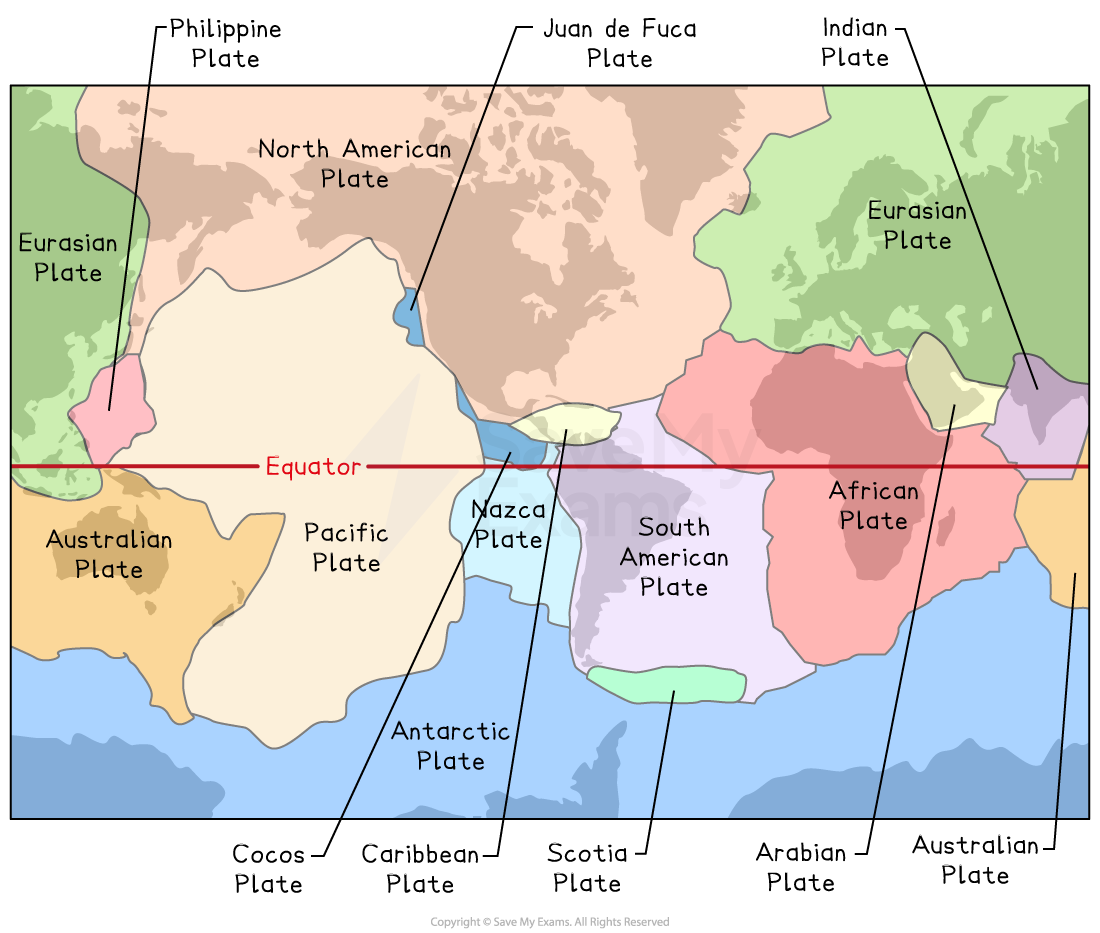
Convergent plate boundaries
Geological changes and events at convergent boundaries
Definition: Convergent plate boundaries occur where two tectonic plates collide
This leads to significant geological activity
These boundaries can result in:
Subduction
The denser, heavier oceanic plate subducts under the lighter, less dense continental plate
Example: The Nazca Plate is being subducted beneath the South American Plate at their convergent boundary
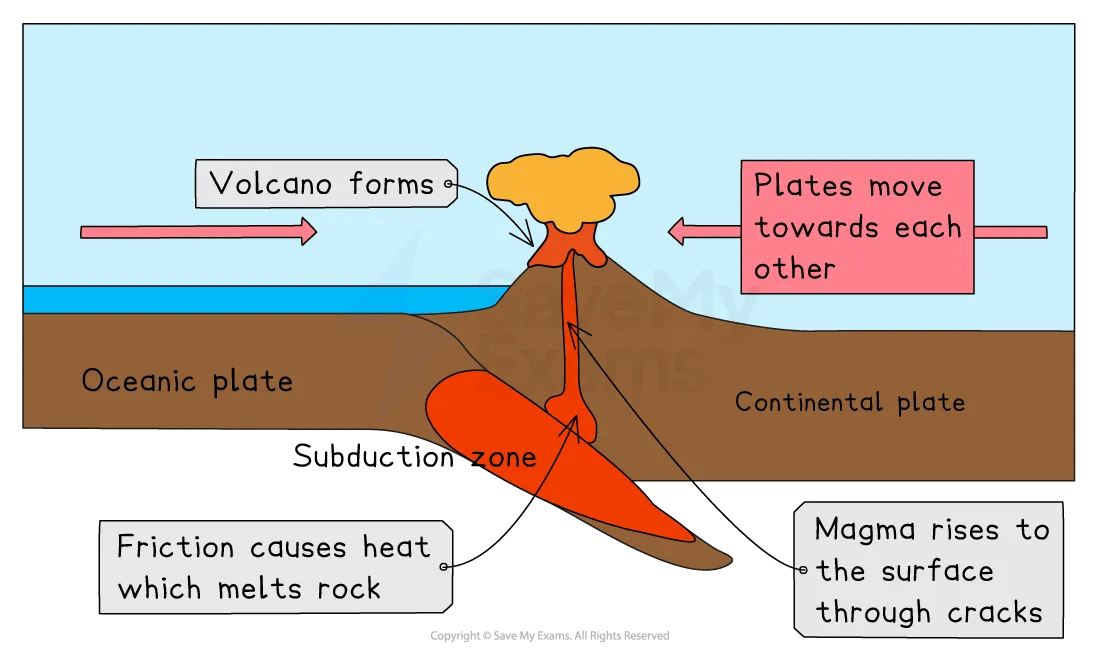
Mountain formation
At a collision boundary, two plates of similar density move towards each other
When these two continental plates collide, neither is dense enough to subduct
This means the crust is forced upward, creating mountains
Example: The Himalayas formed due to the collision of the Indian and Eurasian plates
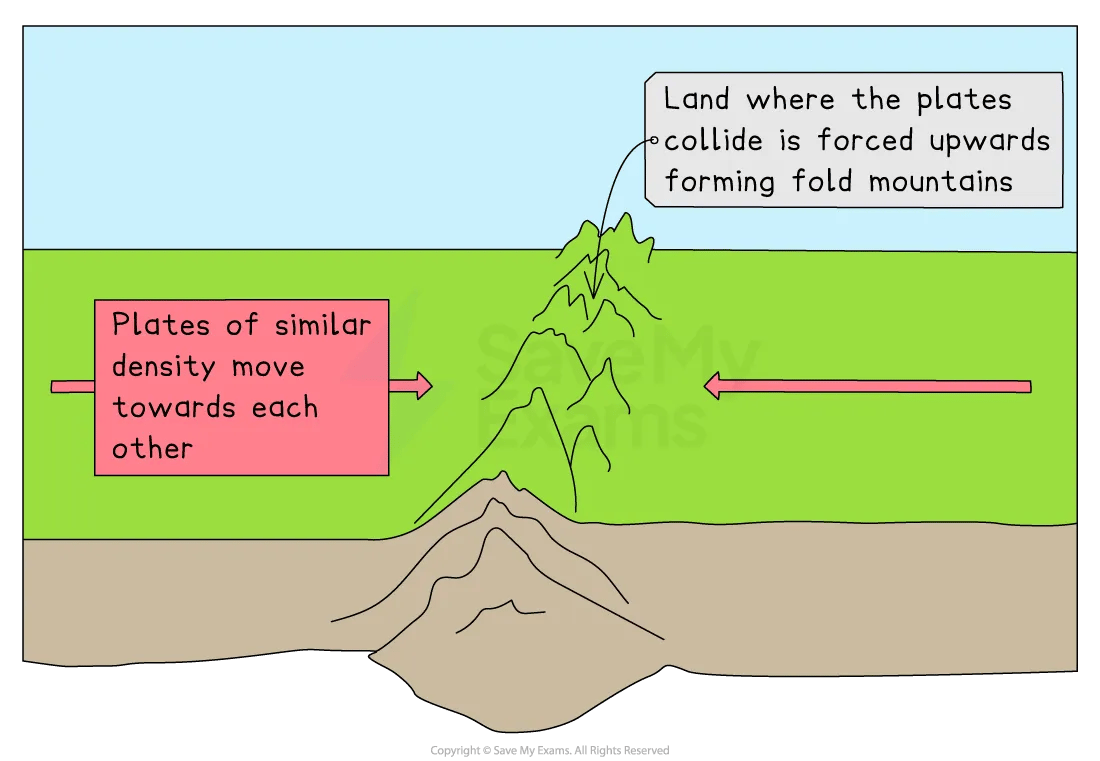
Island arcs
When an oceanic plate subducts beneath another oceanic plate, a curved chain of volcanic islands forms
Example: The Mariana Islands were created by subduction in the Pacific Ocean
Earthquakes
The intense pressure at convergent boundaries leads to frequent, powerful earthquakes
Example: The 2011 Tōhoku earthquake in Japan occurred due to subduction at a convergent boundary
Volcanoes
Subduction of an oceanic plate beneath a continental plate causes magma to rise, forming volcanic mountain ranges
Example: The Andes Mountains contain numerous active volcanoes due to the subduction of the Nazca Plate beneath the South American Plate
Divergent plate boundaries
Geological changes and events at divergent boundaries
Definition: Divergent plate boundaries occur where two tectonic plates move apart
This creates new crust and geological activity
These boundaries can result in:
Seafloor spreading
As plates pull apart, magma rises and solidifies, forming new oceanic crust
Example: The Mid-Atlantic Ridge is a major seafloor spreading center
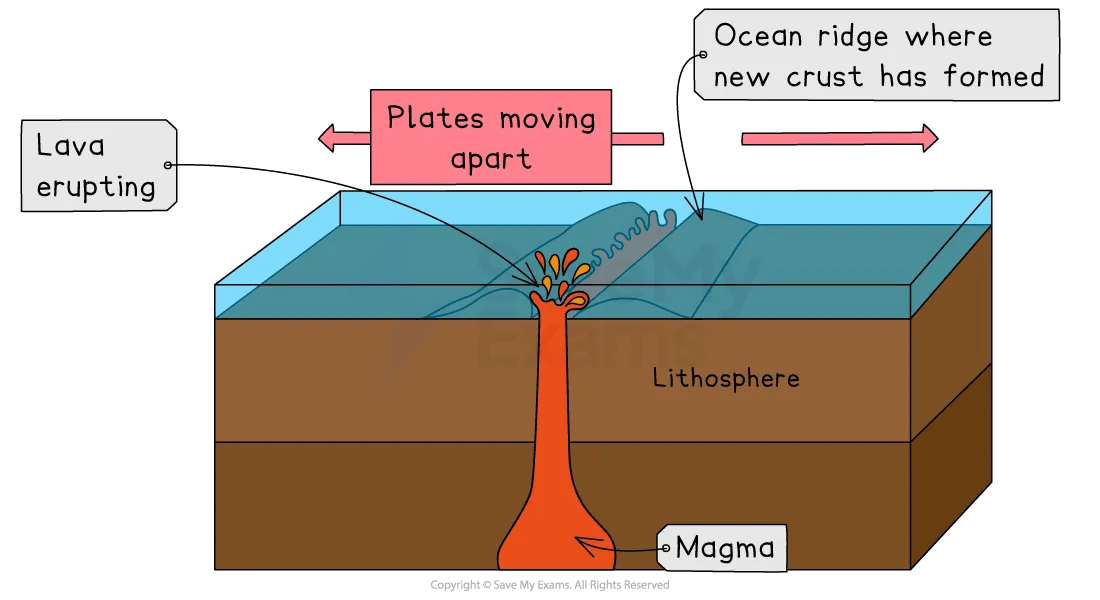
Rift valleys
When continental plates diverge, the crust thins and forms a depression known as a rift valley
Example: The East African Rift is a continental rift valley that may eventually become a new ocean basin
Volcanoes
Rising magma at divergent boundaries can create moderate volcanic activity along mid-ocean ridges and rift zones
Example: Iceland, located on the Mid-Atlantic Ridge, has active volcanoes due to divergent boundary activity
Earthquakes
As plates move apart, stress can cause earthquakes along the boundary
Example: The frequent earthquakes along the Mid-Atlantic Ridge result from the continuous movement of tectonic plates
Transform plate boundaries
Geological changes and events at transform boundaries
Definition: Transform plate boundaries occur where two tectonic plates slide past each other horizontally
They can move past each other in opposite directions or in the same direction at different speeds
This causes intense friction and seismic activity
These boundaries mainly result in:
Earthquakes
The friction between sliding plates builds up stress, which is released as earthquakes
Example: The San Andreas Fault in California is a well-known transform boundary that experiences frequent earthquakes

Global distribution of plate boundaries
Importance of plate boundary maps
Plate boundary maps show the locations where Earth's tectonic plates interact
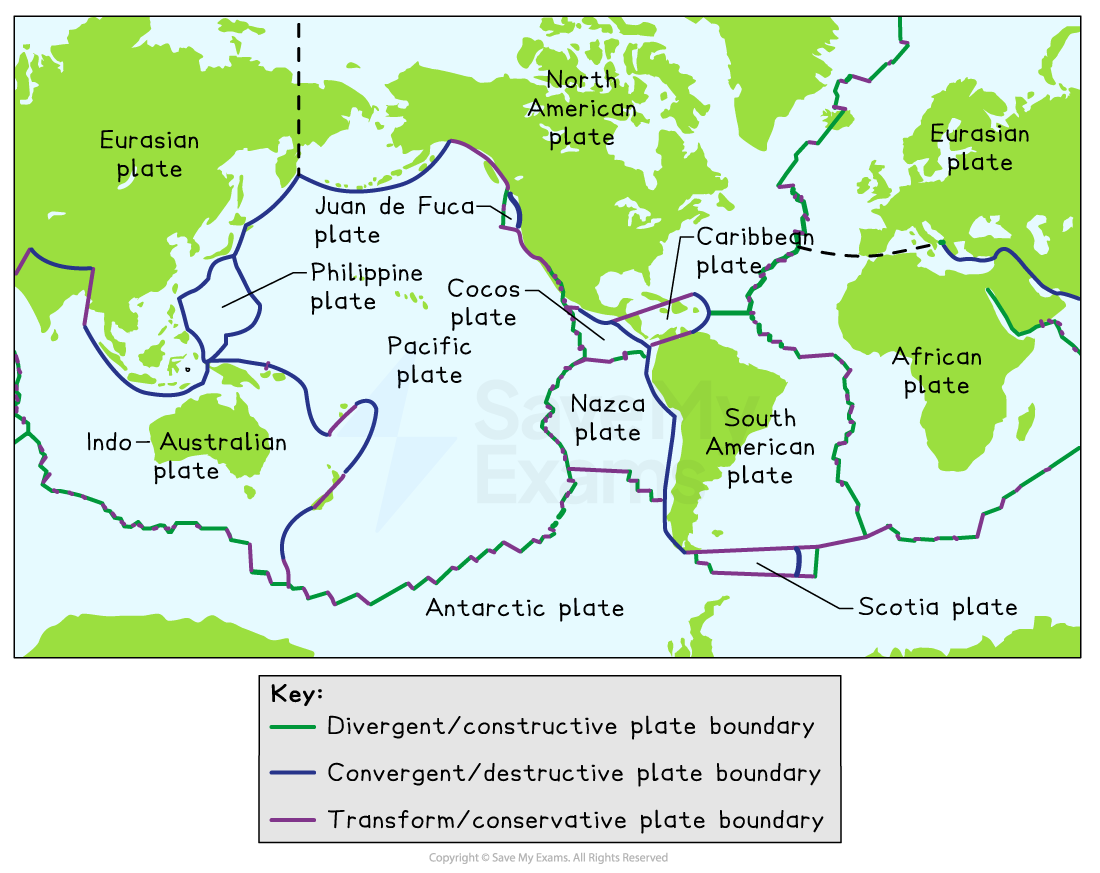
These maps help predict geological activity, including:
Volcanoes
Island arcs
Earthquakes
Hot spots occur where magma rises through the crust, independent of plate boundaries (e.g., Hawaii)
Faults are fractures in Earth’s crust where two blocks of rock move relative to each other due to tectonic forces
Earthquakes
The majority of earthquakes (about 95%) occur close to or at a plate boundary

Volcanoes
Like earthquakes, most active volcanoes occur at or near plate boundaries
Many (about 75%) occur around the 'Ring of Fire' surrounding the Pacific Ocean

Examples of plate boundary distribution
Pacific Ring of Fire:
A tectonically active region surrounding the Pacific Ocean, known for earthquakes and volcanoes
Mid-Atlantic Ridge:
A divergent boundary where new oceanic crust forms, creating volcanic activity and seafloor spreading
San Andreas Fault:
A transform boundary in California known for frequent earthquakes
Earthquakes caused by locked faults
What are locked faults?
A locked fault is a section of a fault that is stuck due to friction
This prevents movement between tectonic plates
Over time, stress builds up as the plates continue trying to move
When the stress overcomes friction, the fault suddenly slips
This releases stored energy as an earthquake
How locked faults cause earthquakes
The longer a fault remains locked, the more stress accumulates
This leads to a more powerful earthquake when it finally moves
Sudden fault movement releases seismic waves, which cause ground shaking and potential destruction
Impacts of locked fault earthquakes
Can generate major earthquakes with significant damage to buildings and infrastructure
May trigger aftershocks as stress redistributes along the fault
In some cases, locked faults near oceanic regions can cause tsunamis
Over 70% of tsunamis occur around the Pacific Ocean
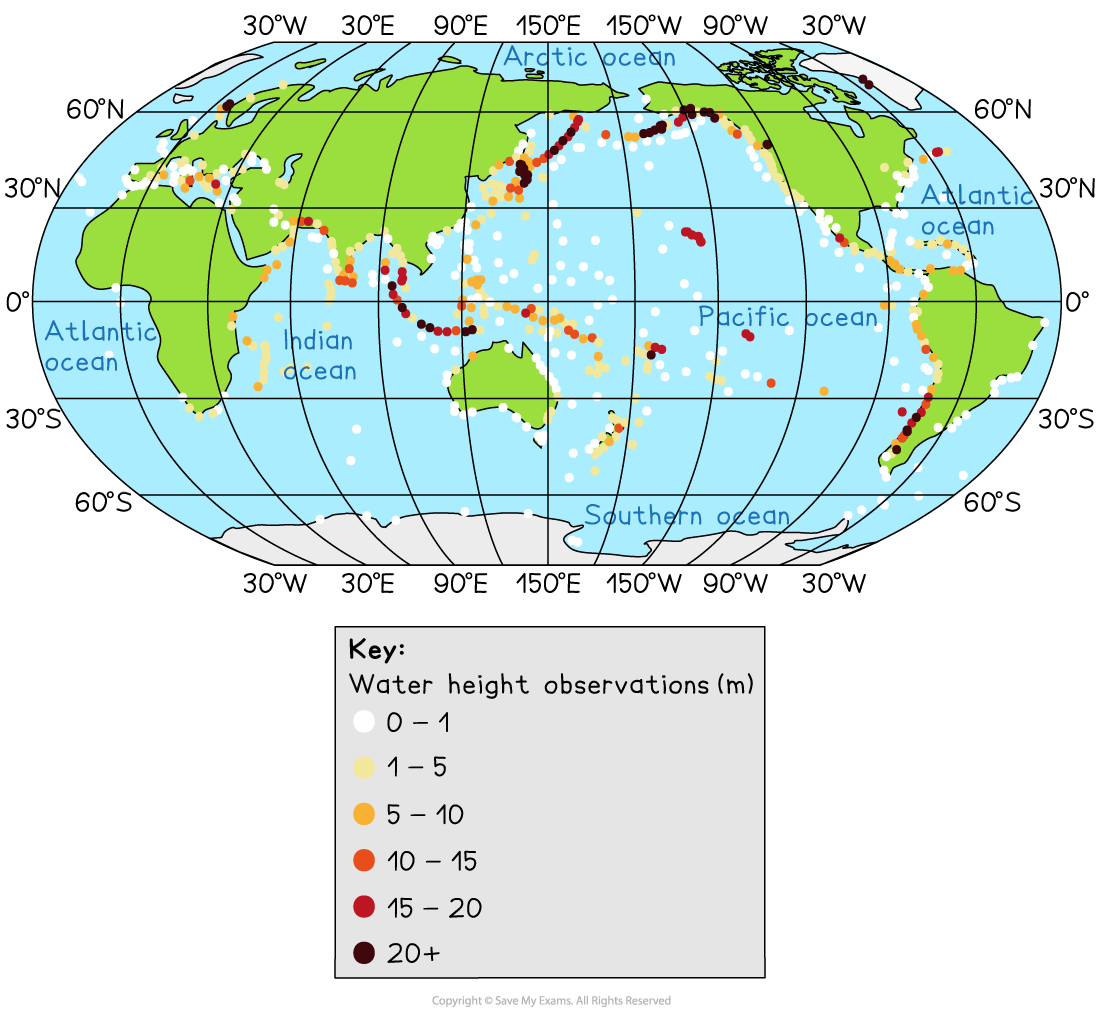

Unlock more, it's free!
Did this page help you?